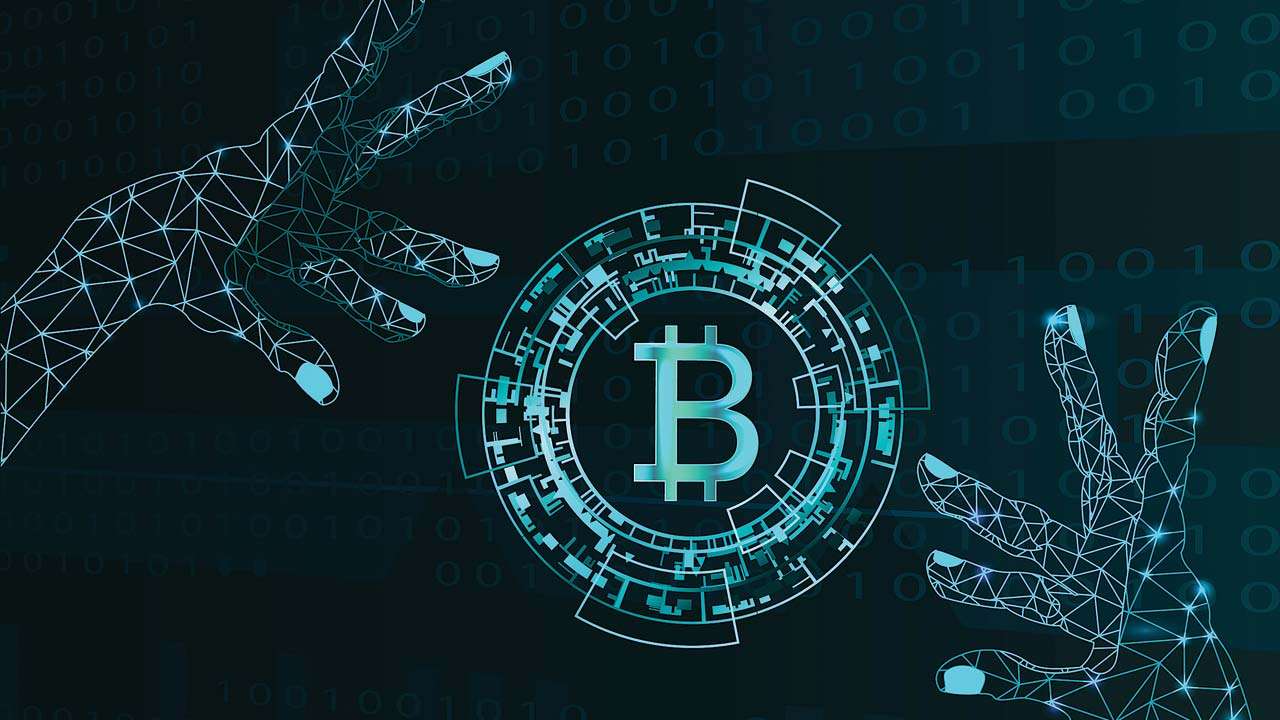What Is Cryptocurrency? (Part-2)
The blockchain brings together the three main types of cryptocurrency (Bitcoin, Altcoin, Tokens). Bitcoin was the first blockchain.
Blockchain is a system of recording information in a way that makes it difficult or impossible to change, hack, or cheat the system.
A blockchain is essentially a digital ledger of transactions that is duplicated and distributed across the entire network of computer systems on the blockchain. Each block in the chain contains a number of transactions, and every time a new transaction occurs on the blockchain, a record of that transaction is added to every participant’s ledger. The decentralised database managed by multiple participants is known as Distributed Ledger Technology (DLT).
Blockchain is a type of DLT in which transactions are recorded with an immutable cryptographic signature called a hash.
After Bitcoin, many new blockchains were created — these are called altcoins. NEO, Litecoin and Cardano are solid examples of altcoins. Finally, tokens/dApps — the third main type of cryptocurrencies were introduced. Examples of these include Civic (CVC), BitDegree (BDG), and WePower (WPR).
Subscribe Launch Trend for more NEWS updates everyday
Here are five main types of Cryptocurrencies:
- BITCOIN:
It is a digital currency that you can send to other people. This may be as a gift, for services or a product. But it’s digital, not physical. However, that isn’t all that makes it different. It’s also decentralized, meaning it doesn’t rely on a bank or third party to handle it.
With Bitcoin, each transaction happens directly between users — it’s called a peer-to-peer network. This is all possible because of blockchain. Bitcoin introduced blockchain technology to allow users to send and receive Bitcoin without using a third party. Because you don’t need a third party, you don’t need to identify yourself. You can make payments without revealing who you are.
In 2008, the idea of Bitcoin was revealed. Someone named Satoshi Nakamoto published the White Paper online. However, it was later revealed that Satoshi Nakamoto was not this person’s real name. Even today, no one knows the real name of the creator of Bitcoin!
At the time, nobody knew that Bitcoin would become what it is today. Nobody knew that it would be the start of a huge technological movement, but it was. It was the beginning of cryptocurrencies — the beginning of a new era.
Several years passed in which the primary use of Bitcoin was to trade goods and services on the dark web. Ever heard of Silk Road?
Silk Road was a digital black market platform that was popular for hosting money laundering activities and illegal drug transactions using Bitcoin. Silk Road, regarded as the first darknet market, was launched in 2011 and eventually shut down by the FBI in 2013. It was founded by Ross William Ulbricht, who is now serving a life sentence in prison for his role in Silk Road.
Since that time, several other darknet markets have risen.
In 2013-14, Bitcoin grew a lot. Then, it slowed down a bit. But in 2017, the market for Bitcoin went up, up and further up. This time, it went a lot further.
In December 2017, Bitcoin reached a price of $20,000 per Bitcoin. So, anyone holding 50 Bitcoins or more became a millionaire. In January 2015, 50 Bitcoins would have cost you just $10,000. That’s a profit of $990,000!
How does Bitcoin Works?
When someone sends Bitcoin, the transaction is verified and then stored on the blockchain (the shared database). The information on the blockchain is encrypted — everyone can see it, but only the owner of each Bitcoin can decrypt it. Each owner of Bitcoin is given a ‘private key’, and this private key is how they decrypt their Bitcoin.
Blockchains are run by lots of different people and companies instead of one single company/person. The people and companies that run the blockchain do it using computer power. They run special software on a computer that processes transactions on the blockchain.
The computers used to run the software are called ‘nodes’.
Running this software uses a lot of electricity, though. So, how do the people and companies running the nodes pay for their electricity bills? Welcome to mining.
The nodes are rewarded for verifying transactions — they’re rewarded with new Bitcoin. This is how new Bitcoins are created. You can compare it to gold mining, in which the miners are rewarded with gold. In Bitcoin mining, the nodes are the miners — they mine for new Bitcoin.
When a new block of transactions is sent to the blockchain, the miners/nodes will verify the block using an algorithm called PoW (Proof-of-Work). In PoW, the first miner to verify the block is rewarded with new coins. There are other algorithms used in other blockchains, but we’ll get to that in the next section.
- ALTCOINS:
There are more than a thousand altcoins in existence. But the majority of altcoins are just alternate versions of Bitcoin with minor changes. That’s how they got the name ‘altcoins’.
It’s important to understand, though, that not all altcoins are just alternate versions of Bitcoin. Some are very very different from Bitcoin and have very different goals/purposes.
Some altcoins use different algorithms for Bitcoin. For example, Factom is an altcoin that uses PoS (Proof-of-Stake). In PoS, there are no miners. Instead, there are stakers.
Stakers are people that verify transactions for rewards, just like miners. But instead of racing to verify a block before anyone else does, they are selected one by one to take their turn. This uses much less electricity because they aren’t thousands of miners using their electricity to try and verify the same block. Instead, there is just one ‘staker’ per block.
Ethereum and NEO are examples of altcoins that are very different from Bitcoin. Ethereum and NEO were not designed to be used as a digital currency. Instead, they were designed as huge platforms for building apps on a blockchain.
On Ethereum and NEO, you can actually build your own applications. This is the most common way that new cryptocurrencies are created; they are made on blockchains that allow app building, like Ethereum and NEO.
This is all possible because Ethereum introduced new technology to the crypto world when it launched in 2015. This technology is called a smart contract.
A smart contract can automatically execute transactions when certain things happen.
These ‘things’ (also called conditions) are written into the smart contract when it is created. For example, a condition could be something like “WHEN Peter sends 120 Ether into the smart contract, THEN John’s house will be sent to Peter”.
Because of smart contracts, no third party is needed. Bitcoin means there is no third party needed in direct payments, but smart contracts mean there is no third party needed in lots of things — like the sale of a house, the sale of electricity, or the sale of stock on the stock market.
Of course, you can’t actually put electricity into a smart contract, can you? So, instead, you put a token into the smart contract that legally represents the electricity. This is one of the best things about smart contracts on Ethereum, NEO, and similar altcoins — you can tokenize real things and put them on the blockchain. - TOKENS (for dApps):
Quick tip: To pronounce dApp correctly, say “dee-app”.
The third main type of cryptocurrency is a token — the same kind we’ve just been talking about! Out of the three main types of cryptocurrency, these are the most interesting. Compared to the other two main types of cryptocurrency, they are unique in the fact that they do not have their own blockchain.
They are used on dApps (decentralized applications); these are the apps that can be built on blockchains like Ethereum and NEO. The dApps are built to use smart contracts, which is why they use tokens.
Their tokens don’t have to represent a physical thing like electricity or a house, though. They can instead be used to purchase things on the dApp. Either that or they can be used to get certain advantages — things like discounted fees and voting fees.
Tokens always have a price that they can be sold for, which is why some people buy them. Some people buy tokens to sell them later for a higher price, instead of buying them to use them on the dApp.
Because dApps are built on other blockchains (like Ethereum and NEO), a token transaction is still verified by the nodes on the Ethereum or NEO blockchain. This means the transaction fee is still paid with Ether or NEO, and not with the token.
So, to make a transaction on a dApp (i.e. to use a token), you must have some Ether or NEO (or whichever altcoin the dApp is built on) to pay for the transaction fees. - RIPPLE:
Basically, Ripple is a blockchain that is designed to be used by banks to make their payments faster. It is known as the banker’s coin, and there are many partnerships with global banks currently being worked on.
- LITECOINS:
Basically, the blockchain of Litecoin used to be a part of Bitcoin’s blockchain, but it split when the Litecoin update was offered. So, it’s very similar but it has different features to Bitcoin. It was created to improve upon what Bitcoin had created.
Litecoin has been in the news a lot lately because it will be the first cryptocurrency to use the Lightning Network.
The Lightning Network solves a lot of issues for cryptocurrencies, such as scalability — using the Lighting Network, Litecoin will be able to process many more transactions per second.
Cryptocurrency explained https://t.co/kUXaXx8a1R
— Elon Musk (@elonmusk) February 20, 2021







More Stories
Indian Air Force Day: Everything You Need To Know
Earth Day: Date, History, Significance Of The Most Important Day
Jallianwala Bagh Massacre: Everything You Need To Know